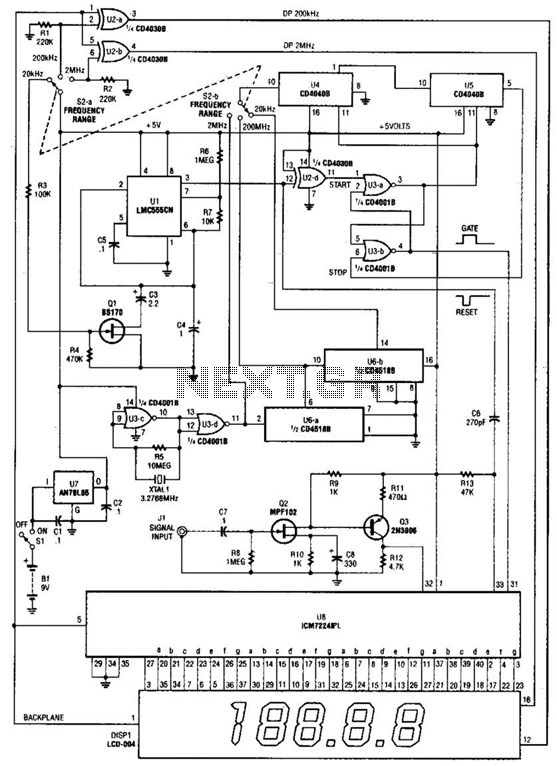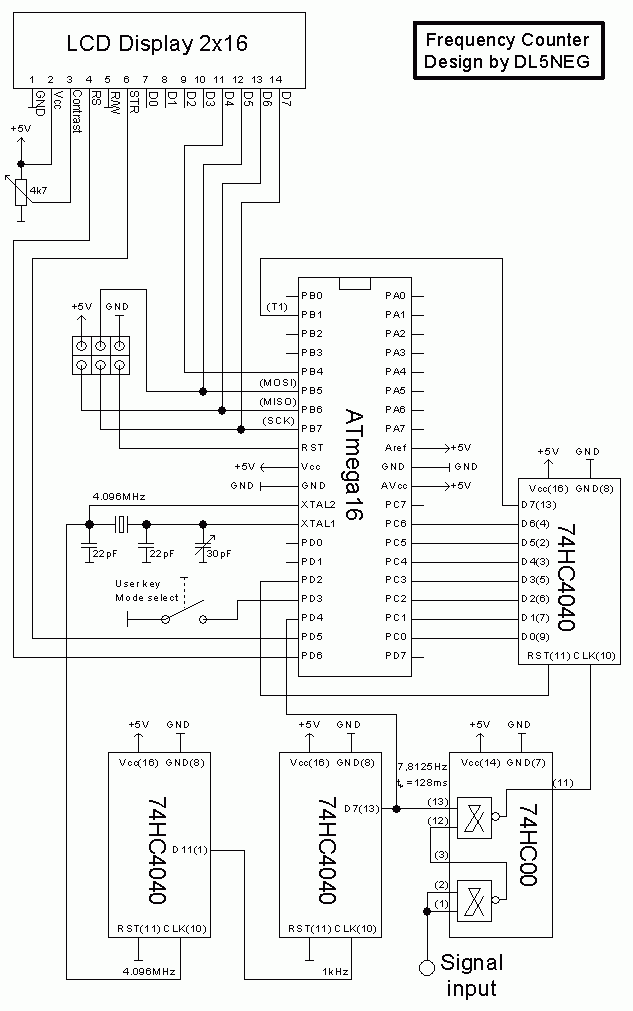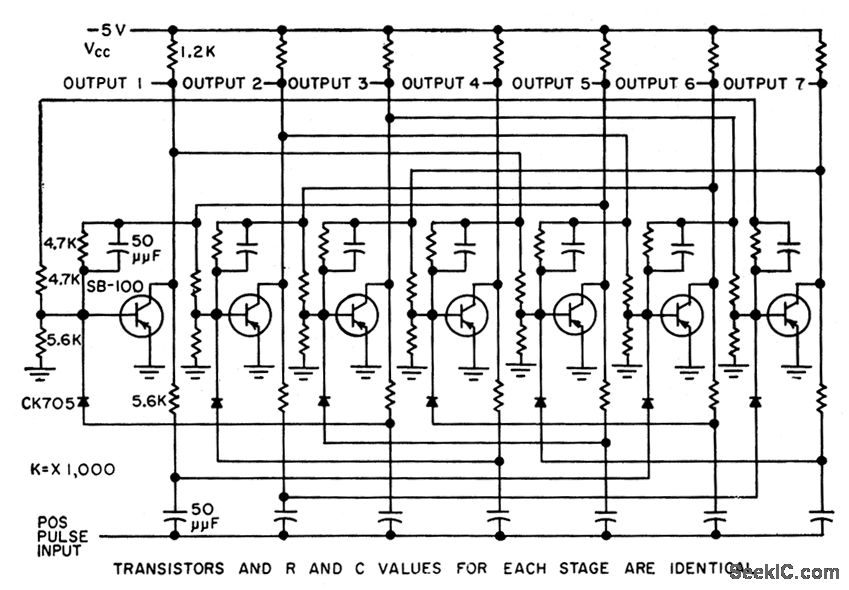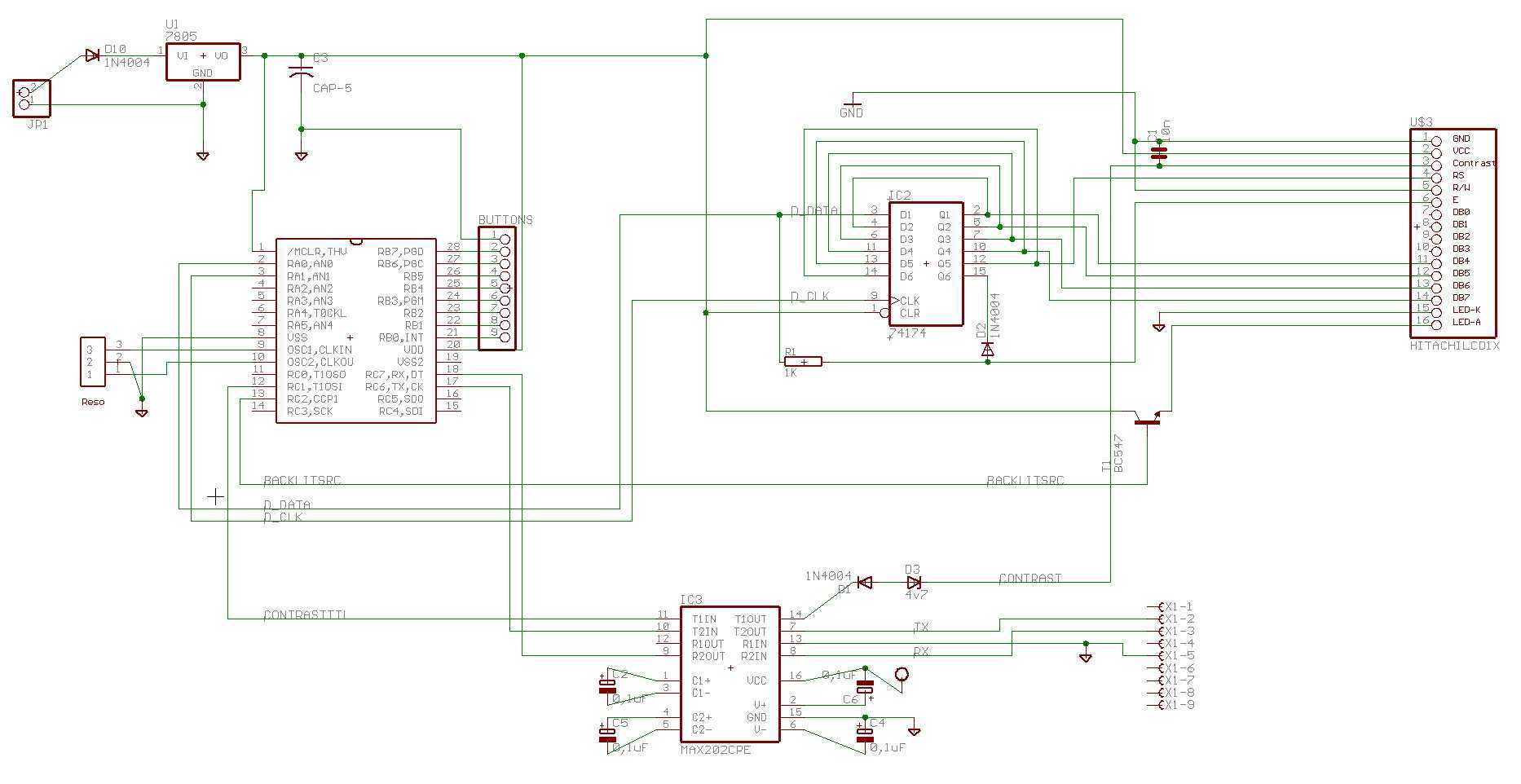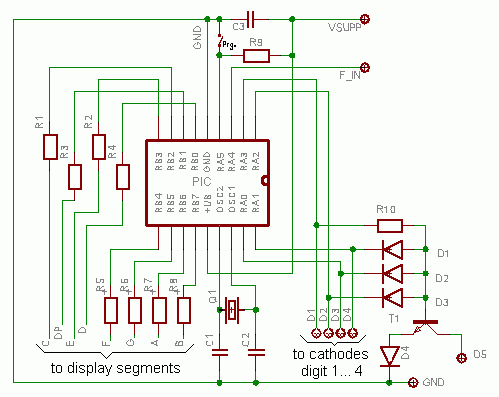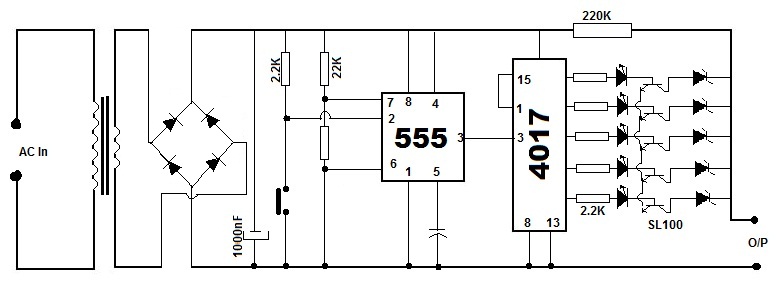
homemade Geiger counter with UGP interface
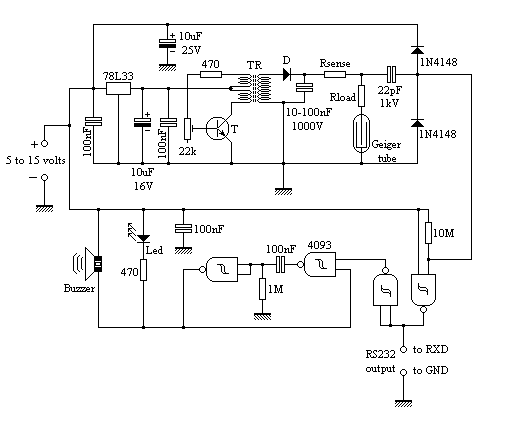
The circuit employs common building blocks. The high-voltage power supply is a classical oscillator circuit utilized in various applications where low current and high voltage are required. The transformer (TR) is a step-up transformer salvaged from a xenon light circuit, similar to those found in portable fluorescent tube flashlights and other battery-operated devices. The transistor (T) is a standard NPN type; many transistors are compatible with this circuit, but a 2SD1207 was used due to availability. It is advisable to test different transistors, as some may perform better in this type of oscillator. The diode (D) is a fast-switching high-voltage diode; a RG1M fast-switching diode from an old television set was used. The 1N4007 diode is not recommended, as it operates effectively at 50/60 - 100/120 Hz but fails at several kHz. This simple high-voltage power supply remains stable if the input voltage is consistent, which is why a 78L33 regulator is included to maintain a minimum supply voltage of around 5 volts for the Geiger counter. The output voltage can be adjusted using a 22k variable resistor, ranging from approximately 200 to 800 volts. The tube employed is a ZP1401 from Mullard, nearly identical to the LND 712, which is suitable for detecting alpha, beta, and gamma radiation. RSense and RLoad are sourced from the LND 712 datasheet (1 and 10 MΩ) in accordance with the operating voltage of 500 volts. The remaining circuit comprises the UGP interface (located at the rightmost gate in the schematic), from which the RS232 signal is derived. This signal is also fed into a simple monostable circuit to produce beeping sounds and LED flashes with each count. The circuit is housed in an aluminum box with an opening for alpha particles to enter the tube's mica window. To protect the delicate mica window, a wire mesh cut from a desktop pencil holder was effectively utilized. The Geiger counter operates regularly with a low-cost RS232-USB adapter without issues. A switch has been installed to disable the beeper, which is particularly useful during extended background monitoring sessions. The entire Geiger counter draws only 30 mA when in operation, allowing it to be powered from a USB port if desired.
The described circuit is a compact and efficient high-voltage power supply designed for use with a Geiger counter. The oscillator circuit generates the necessary high voltage by utilizing a step-up transformer, which is essential for the operation of the radiation detection tube. The choice of components is crucial; the NPN transistor serves as the primary switching element, while the fast-switching diode ensures that the high-voltage output is managed effectively without introducing delays that could compromise performance.
The inclusion of a voltage regulator, specifically the 78L33, is a significant design consideration as it stabilizes the input voltage, ensuring reliable operation of the entire circuit. The adjustable output voltage feature, achieved through the variable resistor, allows for fine-tuning of the high voltage supplied to the radiation detection tube, accommodating various detection requirements.
The ZP1401 tube, known for its sensitivity to different types of radiation, is well-suited for applications in radiation monitoring. The resistors RSense and RLoad are selected based on the tube's specifications, ensuring that the circuit operates within the desired parameters for accurate radiation detection.
The integration of the UGP interface for RS232 communication facilitates easy data transfer to external devices, enhancing the functionality of the Geiger counter. The additional monostable circuit for audio and visual feedback provides immediate user feedback, improving the usability of the device during operation.
The protective housing design, featuring a mesh cover over the mica window, demonstrates a practical approach to safeguarding sensitive components while allowing for unobstructed radiation detection. Overall, the circuit exemplifies a well-thought-out design that balances performance, reliability, and user convenience in a compact form factor.It uses very common building blocks. The high voltage power supply is a classical oscillator circuit used in many places where a low current and high voltage is needed. TR is a step-up transformer salvaged from a xenon light circuit. You can find simmilar transformers in fluorescent tube portable flashlights and simmilar devices using battery oper
ated fluorescent tubes. T is a common NPN transistor. Many transistors will work in this circuit. I used a 2SD1207 just because I found it in my junk box. Test some different transistors. Ones seems to work better that others in this kind of oscillators. D is a fast switching high voltage diode. I used a RG1M fast switching diode from an old TV set. Don`t use 1N4007, it works fine at 50/60 - 100/120 Hz but fails at several kHz. This simple high voltage power supply is stable enough if input voltage is stable, so I placed a 78L33 regulator in front of it. This limits the minimum Geiger`s supply voltage to around 5 volts. The output voltage can be adjusted with the aid of the 22k variable resistor from about 200 up to 800 volts.
The tube used is a ZP1401 from Mullard, almost identical to the LND 712 useful to detect alphas, betas and gammas. RSense and RLoad are taken from the LND 712 datasheet (1 and 10 Mohms) in the same way as the operating voltage (500 volts).
The rest of the circuit is the UGP interface (the rightmost gate in schematics) from where the RS232 signal is taken. This signal is feed also into asimple monostable circuit to produce nice beeps and led flashes with every count.
The circuit was mounted into an aluminum box with a hole to get alpha particles to get into the tube mica window. To protect this extremally delicated mica window a wire mess cut from a desktop pencil bucket was used with great success.
I use regulary this geiger counter with a cheap RS232-USB adapter and works fine. I installed a switch to disable the beeper, very useful during long background monitoring periods. The whole geiger in operation draws only 30 mA so it can be powered from the USB port if desired. 🔗 External reference
The described circuit is a compact and efficient high-voltage power supply designed for use with a Geiger counter. The oscillator circuit generates the necessary high voltage by utilizing a step-up transformer, which is essential for the operation of the radiation detection tube. The choice of components is crucial; the NPN transistor serves as the primary switching element, while the fast-switching diode ensures that the high-voltage output is managed effectively without introducing delays that could compromise performance.
The inclusion of a voltage regulator, specifically the 78L33, is a significant design consideration as it stabilizes the input voltage, ensuring reliable operation of the entire circuit. The adjustable output voltage feature, achieved through the variable resistor, allows for fine-tuning of the high voltage supplied to the radiation detection tube, accommodating various detection requirements.
The ZP1401 tube, known for its sensitivity to different types of radiation, is well-suited for applications in radiation monitoring. The resistors RSense and RLoad are selected based on the tube's specifications, ensuring that the circuit operates within the desired parameters for accurate radiation detection.
The integration of the UGP interface for RS232 communication facilitates easy data transfer to external devices, enhancing the functionality of the Geiger counter. The additional monostable circuit for audio and visual feedback provides immediate user feedback, improving the usability of the device during operation.
The protective housing design, featuring a mesh cover over the mica window, demonstrates a practical approach to safeguarding sensitive components while allowing for unobstructed radiation detection. Overall, the circuit exemplifies a well-thought-out design that balances performance, reliability, and user convenience in a compact form factor.It uses very common building blocks. The high voltage power supply is a classical oscillator circuit used in many places where a low current and high voltage is needed. TR is a step-up transformer salvaged from a xenon light circuit. You can find simmilar transformers in fluorescent tube portable flashlights and simmilar devices using battery oper
ated fluorescent tubes. T is a common NPN transistor. Many transistors will work in this circuit. I used a 2SD1207 just because I found it in my junk box. Test some different transistors. Ones seems to work better that others in this kind of oscillators. D is a fast switching high voltage diode. I used a RG1M fast switching diode from an old TV set. Don`t use 1N4007, it works fine at 50/60 - 100/120 Hz but fails at several kHz. This simple high voltage power supply is stable enough if input voltage is stable, so I placed a 78L33 regulator in front of it. This limits the minimum Geiger`s supply voltage to around 5 volts. The output voltage can be adjusted with the aid of the 22k variable resistor from about 200 up to 800 volts.
The tube used is a ZP1401 from Mullard, almost identical to the LND 712 useful to detect alphas, betas and gammas. RSense and RLoad are taken from the LND 712 datasheet (1 and 10 Mohms) in the same way as the operating voltage (500 volts).
The rest of the circuit is the UGP interface (the rightmost gate in schematics) from where the RS232 signal is taken. This signal is feed also into asimple monostable circuit to produce nice beeps and led flashes with every count.
The circuit was mounted into an aluminum box with a hole to get alpha particles to get into the tube mica window. To protect this extremally delicated mica window a wire mess cut from a desktop pencil bucket was used with great success.
I use regulary this geiger counter with a cheap RS232-USB adapter and works fine. I installed a switch to disable the beeper, very useful during long background monitoring periods. The whole geiger in operation draws only 30 mA so it can be powered from the USB port if desired. 🔗 External reference
